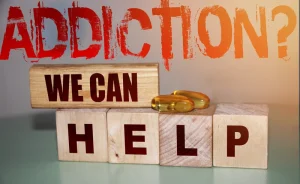
An impaired driver lacks the ability to quickly and decisively avoid an accident or even perform routine driving maneuvers. Drunk drivers endanger themselves and everyone on the road, increasing the risk of automobile crashes and deaths. Driving under the influence (DUI) refers to being under the influence of any substance (including alcohol) and then operating a motor vehicle. Often called “drunk driving” interchangeably, it refers to operating any vehicle (including bicycles, motorcycles, golf carts, etc.) while impaired. Every day, about 37 people in the United States die in drunk-driving crashes — that’s one person every 39 minutes.

BAC of 0.05
Did you know that you can also get a DUI for driving under the influence of drugs? Driving while impaired by any substance — legal or illegal — puts you and others in harm’s way. A DUI can set you back, on average, $10,000, and there could be a crash — people could get hurt or killed. Driving drunk happens for many reasons, but the reasons are all based on impulsive decisions that can have ramifications that last a lifetime. Unfortunately, when we’re inebriated, our decision-making abilities are also highly impaired. If you’ve ever driven after drinking in the past, you have a road map to examine all the decisions you made along the way that led to you getting behind the wheel.
What Is The Most Popular Program For Recovering Alcoholics?
Thus, further investigation elucidating who were more affected by the recent alcohol use trends and driving behaviors among women involved in DUI of alcohol is warranted. Deterrence works by changing behavior through the fear of apprehension and punishment. If drivers believe impaired driving is likely to be detected and impaired drivers are likely to be arrested, convicted, and punished, many will not drive while impaired by alcohol. This strategy, called general deterrence, influences the general driving public. An example of general deterrence would be well-publicized and highly visible enforcement activities, such as sobriety checkpoints. In contrast, specific deterrence refers to efforts to influence drivers who have been arrested for impaired driving so they will not continue to drive while impaired by alcohol.
Examining your past decisions around drinking and driving

And every two minutes, someone is injured in a car accident involving alcohol. Two of every three people will be impacted by a drunk driving crash at some point in their lifetime. It’s a sobering thought to know that around 32% of crash fatalities on U.S. roads involve a drunk driver. This means about 13,524 deaths are preventable consequences of driving drunk include: each year, highlighting just how important it is to avoid getting behind the wheel after you’ve been drinking. Alcohol consumption impairs the body’s ability to respond quickly. This slows down reaction time, increasing the risk of car accidents as you cannot react as fast as you would without alcohol in your system.

Alcohol-impaired driving in rural and urban road environments: Effect on speeding behaviour and crash probabilities
Repeat offenders who drink and drive are a very real, very deadly problem. Drivers with BACs of .08 g/dL or higher involved in fatal crashes were 4 times more likely to have prior convictions for driving while impaired than were drivers with no alcohol (6% and 2%, respectively). When applied to alcohol, DUI is often defined by the state’s “legal limit,” which is typically a blood alcohol content (BAC) of .08%. This offense may also be called OUI (operating under the influence) or DWI (driving while impaired). Although we identified decreasing trends in DUI of alcohol (except among older adults), we also found that nearly one in every ten adults in the United States drove under the influence of alcohol. Moreover, special attention is needed with respect to observed gains in the number of women arrested.
NHTSA data shows that during 2021, 13,384 people died in accidents that involved drunk driving. Just one drink or a small number of drinks can make you unsafe behind the wheel and put your life and the lives of others at risk. To inform prevention efforts while triangulating existing evidence, further evaluation of trends in the prevalence of DUI of alcohol and identification of populations at heightened risk is critical. For instance, Schwartz and Beltz (2018) showed that men’s alcohol-impaired driving rates continue to remain higher than women’ despite an overall decreasing trend. Yet, DUI arrests have increased among women since 1985, narrowing the gender gap (Schwartz & Beltz, 2018; Schwartz & Rookey, 2008). Studies also point to the different drinking and driving behaviors by prior DUI and other criminal arrests.
Inpatient Rehabilitation Programs

Effect of eco-driving on commercial motor vehicle driver collision risk
- MADD Labrador West president Thelma Ricketts believes many in the community don’t see the impacts of drunk driving since it hasn’t affected them personally.
- That emotional burden can be worse than any bodily harm; however, the physical perils of drunk driving are immense too.
- Alcohol can alter the activity of the prefrontal cortex, which is linked to impulse control.
- Despite the decreased alcohol-involved driving over the past decade, there remains worrisome levels among young adult males.

Recent Comments